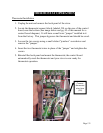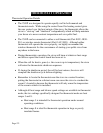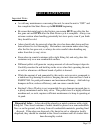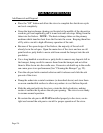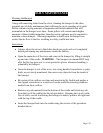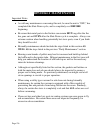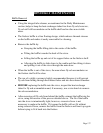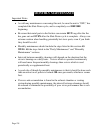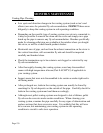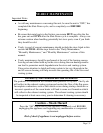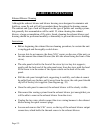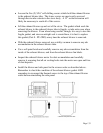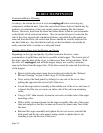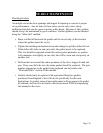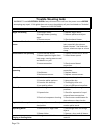
Page | 29
MONTHLY MAINTENANCE
Exhaust Chamber Cleaning
The exhaust chamber of the stove was intentionally designed as an ash
accumulation area. Allowing ash to accumulate here prevents excess ash build-up
in the combustion blower and the venting system. Similarly, the exhaust chamber
is easily accessible via the two exhaust chamber clean-out ports located in the
firebox.
Instructions
• Only clean the exhaust chamber AFTER cleaning the firebox shelf and heat
exchanger tubes, because cleaning them will deposit ash into the exhaust
chamber.
• Using a 5/16” socket wrench, remove the two screws which hold each of the
clean-out covers in place. The cleanout covers are located on the back wall
of the firebox, near the bottom.
• Remove the cleanout covers from the firebox and BEFORE vacuuming the
chamber out, observe the type and quantity of ash build-up. The ash
deposited in the exhaust chamber should be light, fluffy, grey or white in
color, and should be no higher than half way up the clean-out port.
o If the ash is dark brown or black, it is generally evidence of
incomplete pellet combustion.
o Do NOT allow the ash to accumulate higher than about half way up
the cleanout port; significant ash accumulation in this area can
“choke” the combustion blower and cause poor stove performance.
• Using a utility type vacuum cleaner, as previously mentioned in this manual,
vacuum the fly ash out of the exhaust chamber. A short piece of hose can be
attached to the end of the utility vacuum line and can be useful in reaching
the ash which accumulates between the clean-out ports.
• Once all ash has been removed from the exhaust chamber, reinstall the
cleanout port covers, using the screws previously removed.
• Be certain to tighten the screws down to sufficiently seal the cleanout port
covers, but do not over-tighten them, as it possible to damage the screw.



